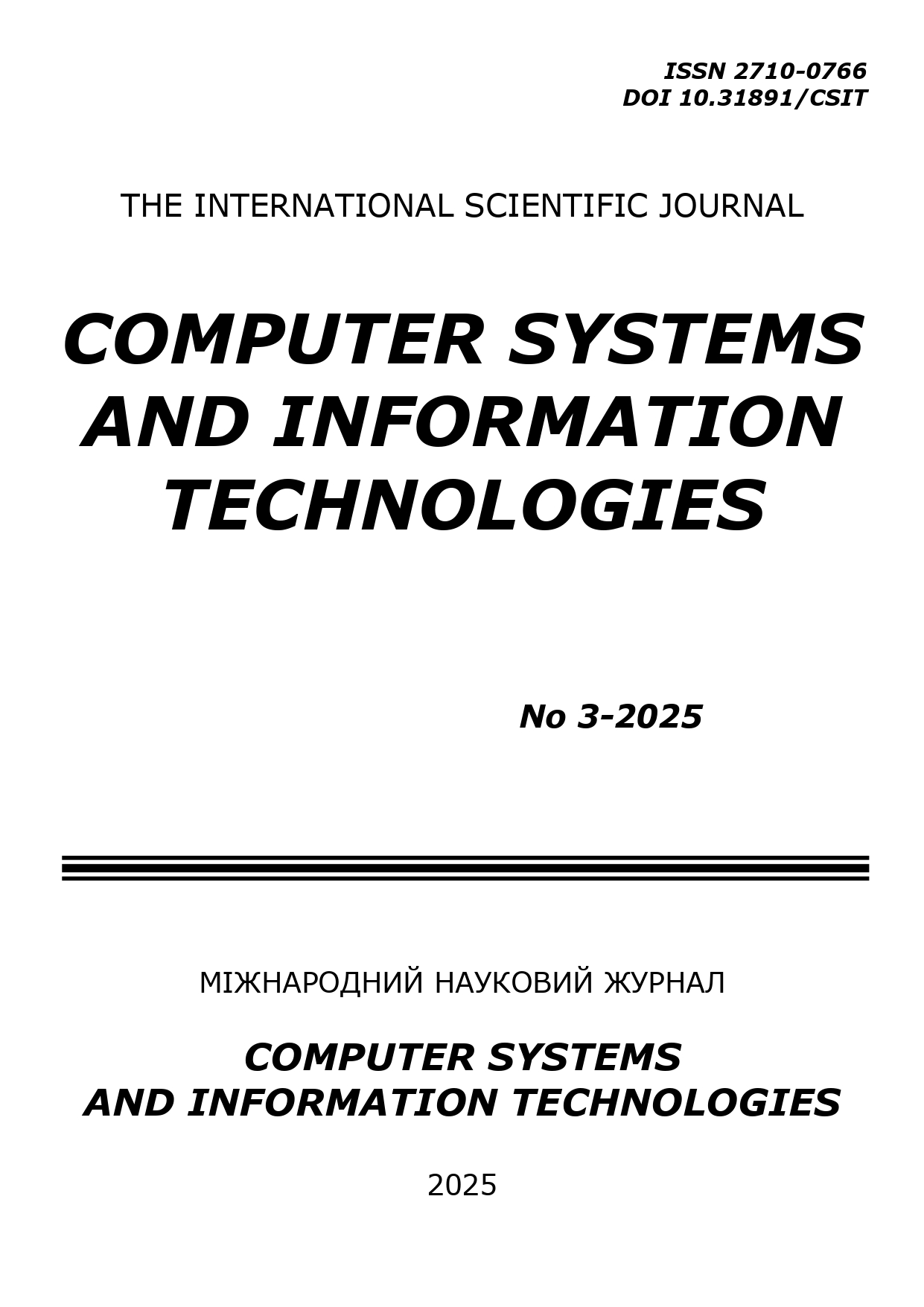RESULTS OF APPLICATION OF INFORMATION TECHNOLOGY FOR PROCESSING AND ANALYSING ELECTROCARDIOGRAM SIGNALS TAKING INTO ACCOUNT THEIR MORPHOLOGICAL AND RHYTHMIC CHARACTERISTICS
DOI:
https://doi.org/10.31891/csit-2025-3-4Keywords:
electrocardiographic signal modeling, model, analysis, diagnostics, information technology, cyclic discrete random process, amplitude-time characteristics, cardiac signal analysis, mathematical modeling, time rhythm function, cardiac diagnostics, amplitude variability, signal classification, artificial intelligence (AI), machine learning system (MLS), neural networkAbstract
This paper presents an information technology for comprehensive processing and analysis of electrocardiographic signals considering their morphological and rhythmic characteristics based on a cyclic random process mathematical model for improved cardiac pathology detection. The proposed information technology utilizes a cyclic random process (CRP) model that naturally accounts for the quasi-periodic structure of ECG signals with variable rhythm. The system implements sequential and parallel processing through interconnected functional blocks: preprocessing (baseline drift removal, noise filtering), automatic segmentation for cycle boundary detection, rhythm function formation using cubic spline interpolation, cyclic signal transformation ensuring equal sample counts per cycle, and separate statistical processing of morphological and rhythmic features. Experimental verification was performed on real ECG signals from patients diagnosed with atrial fibrillation and atrial flutter.
The technology successfully segmented ECG signals and quantified both amplitude and temporal variability. For atrial fibrillation, the rhythm function demonstrated significant variability (400-800 ms range) with sharp transitions between adjacent values. For atrial flutter, the rhythm function showed greater stability (150-230 ms range) with smoother fluctuations. Statistical analysis revealed distinct patterns of morphological variability, with dispersion values reaching 0.004 mV² for atrial fibrillation and 0.025 mV² for atrial flutter. The key innovation lies in the simultaneous yet separate analysis of morphological and rhythmic characteristics through rhythm function incorporation, enabling comprehensive assessment of both amplitude variability and beat-to-beat dynamics within a unified CRP framework. The developed technology enables automated differentiation between various cardiac pathologies through independent classification of rhythmic and morphological abnormalities, supporting clinical decision-making in cardiac diagnostics and real-time monitoring applications.
Downloads
Published
How to Cite
Issue
Section
License
Copyright (c) 2025 Андрій СВЕРСТЮК, Любомир МОСІЙ

This work is licensed under a Creative Commons Attribution 4.0 International License.

